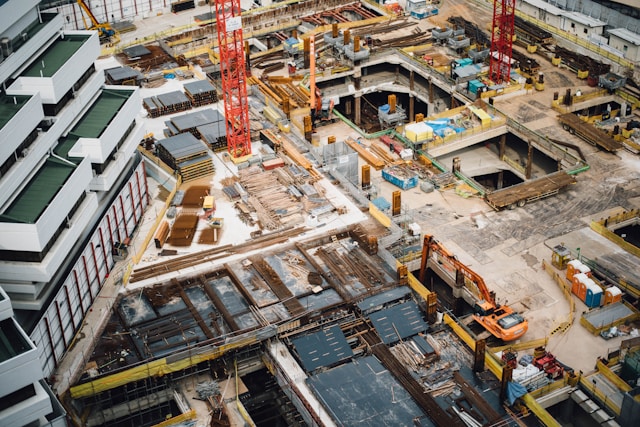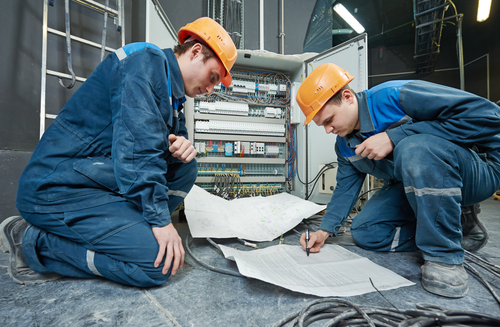It would not be an exaggeration to state that building and construction have significantly shaped the physical landscapes around us and thereby done much to influence the way we presently live. From the simplest buildings to multilevel skyscrapers, the construction of dams which provide hydroelectric power – such as the Three Gorges Dam in Hubei, China, which has the world’s largest instantaneous generating capacity (22,500 MW) – bridges which span kilometres (for instance, as the Golden Gate Bridge in San Francisco, which was completed in 1937 and was, at the time, the tallest and longest suspension bridge in the world) and roads which link cities and vast areas of otherwise unusable land, construction and building have supported economic growth and allowed for the continued expansion of societies. These industries include a wide range of activities, from planning and design to the actual building process, providing safe, functional and sustainable structures.

How has construction evolved?
When mankind first began building basic living shelters in ancient times, the tools involved were simple, comprised of wood, stone and clay. However, as civilisation evolved, so too did the design, intent and construction of buildings. The first more enduring and technically challenging structures, such as fortifications, temples and pyramids, required more complex methodology and tools that were able to cope with the demands that advancement in this area required. To this day, though, it is still not known exactly how the Great Pyramid of Egypt, dating back some 4 600 years, was built. Other ancient civilisations, such as those of the Mesopotamians and Mayan, also defined their legacies through the construction of pyramids, and archaeologists and scientists are still trying to discover the true purpose behind these constructions.
Advancements in technology, materials, and engineering have reshaped the construction industry. Modern projects incorporate advanced machinery, innovative building materials, and modern techniques, leading to faster, safer, and more sustainable development procedures.
What are the steps involved in building practices?
There are certain steps which are followed before any building or construction begins. Let’s look briefly at the processes involved in building structures. Everything begins with Design and planning, both essential when putting together any building project, and are key to ensuring a functional, safe and durable environment for everyone who will be using the building, whether it be in the private sector or commercial sphere. Architects begin the process by identifying the project’s goals, budget, and timeline, paying close attention to the impact of the design on the environment and its adherence to legal requirements and safety factors. Technological advances have allowed for more detailed blueprints and the inclusion of more safety features in the final design, thus enhancing the functionality and durability of the building. For instance, skyscrapers in countries which suffer from earthquakes now include safeguards such as shear walls which transfer or distribute vibrations into the strongest part of modern office towers, the foundation. Interestingly, it has been proven in earthquake-stricken countries like Japan that the vertical structure of a building is better able to withstand high winds and movement than the horizontal structure.
Once the design has been approved, the preparation of the site is the next important step. This includes testing the type of soil to ensure that it is suitable for building, demolishing existing structures and removing the rubble, clearing vegetation, and levelling the site. Site preparation also includes setting up utilities like water, electricity, and drainage systems. Once this is done, the foundation or base of the building, which is responsible for supporting the building’s weight and stability, is laid. The type of building and soil conditions determine the choice of foundation, whether it be slab, pier, or deep foundation. Ensuring proper foundation work is essential for the structure’s long-term durability and safety. The structural framework or skeleton of the building is built upon the foundation, using materials such as steel, concrete or timber. This framework provides support for walls, floors, and roofing. Next, the building is enclosed with walls, windows, doors, and a roof to shield the interior from varying weather conditions while interior work progresses. Builders then install insulation to regulate temperature and enhance the building’s energy efficiency. Finally, the interior work begins, including the installation of electrical wiring, plumbing and ventilation systems. Walls are plastered, floors are laid, bathrooms and kitchens are built, and cupboards and cabinetry are installed. Once the building is complete, it undergoes a final inspection to ensure that it complies with all safety and building regulations, usually undertaken by a building inspector who will carry out periodic inspections during the building process.
On a final note …
The building and construction industry plays a vital role in creating and shaping the spaces where we live, work, and connect. From initial planning to final completion, the process demands precision, expertise, and adaptability to evolving technologies and environmental needs. As the industry progresses, sustainability and innovation will be crucial in ensuring that future structures are not only functional and visually appealing but also environmentally responsible.

